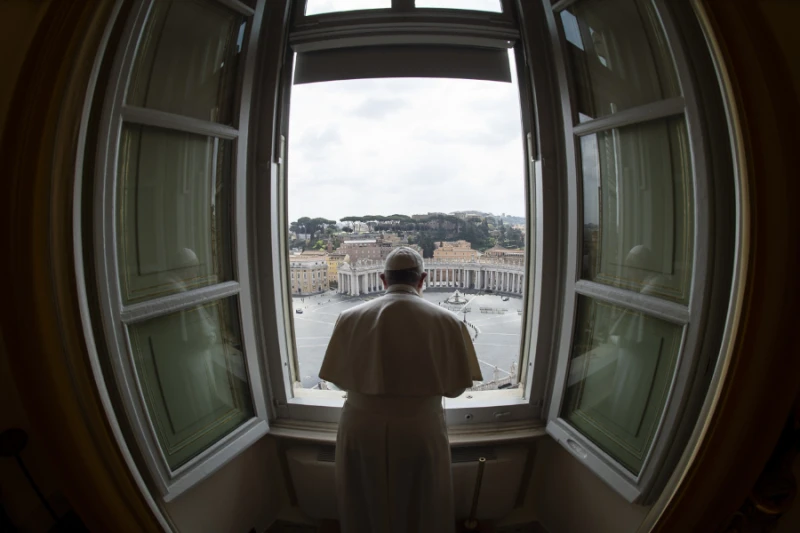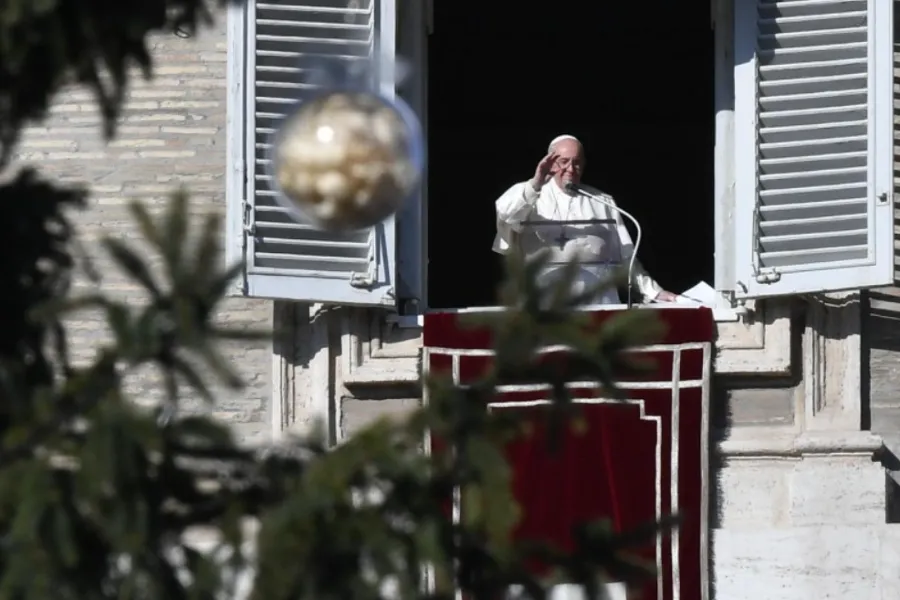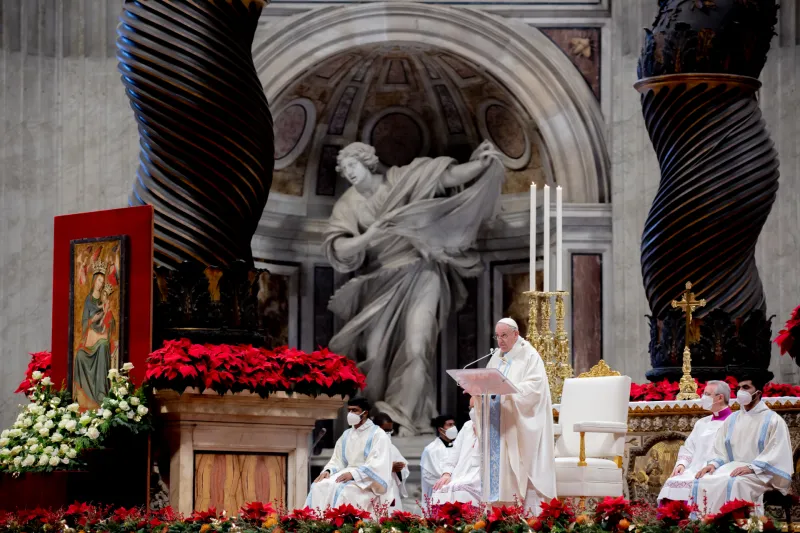
Why the pope prays the Angelus publicly on Sundays
 Pope Francis after praying the Angelus in the Vatican’s apostolic palace on March 29, 2020. Credit: Vatican Media. / null
Pope Francis after praying the Angelus in the Vatican’s apostolic palace on March 29, 2020. Credit: Vatican Media. / null
Vatican City, Jan 4, 2022 / 04:30 am (CNA).
It all started more than 67 years ago with Luigi Gedda, an Italian Catholic doctor, political activist, and influential lay leader.
In a Marian Year, Gedda, then president of the association Azione Cattolica (Catholic Action), convinced his friend Pope Pius XII to recite the midday Angelus publicly from the window of his private study.
So, on Aug. 15, 1954, the Solemnity of the Assumption of Mary, Pius XII addressed Catholics in Rome and around the world over Vatican Radio, inviting them to join him “in the pious greeting to the Mother of God.”
This was the beginning of a papal custom that takes place every Sunday and Marian solemnity, when the pope appears at the window of his library in the Apostolic Palace at noon to lead the faithful gathered below in St. Peter’s Square in praying the Angelus in Latin.
The Angelus has its roots in a medieval practice of praying the Hail Mary three times in a row, as recommended by St. Anthony of Padua.
In the 1200s, a group of Franciscans proposed that the practice be done in the evening after praying Compline (Night Prayer), as a way of meditating on the mystery of Christ’s Incarnation. A bell would be rung to remind the friars and others that it was time to pray the Hail Marys.
Over the centuries, the three Hail Marys began to be prayed also in the morning and at midday.
Today, the prayer also includes words from the Annunciation, the Angel Gabriel’s announcement to Mary that she had been chosen to be the Mother of God, and a closing prayer.
Evidence of the modern iteration is found as early as the 1500s, in a book called the Little Office of the Blessed Virgin Mary, which was printed in Rome during the reign of Pope Pius V, and a handbook for Catholics published in Antwerp in 1588.

At the Vatican, many offices have the custom of pausing work every day to pray the Angelus together at noon.
During the Easter season, the Angelus is replaced with the Regina Coeli (“O Queen of Heaven”), a Marian antiphon prayed or sung during Easter.
Over the years, popes have used the moment before the recitation of the Marian prayer to give a short catechesis, message, or appeal.
Pope Francis does not visit the papal summer residence of Castel Gandolfo, located outside Rome, but the popes who did would recite the Angelus from the palace during their period of rest.
At certain points during the COVID-19 pandemic, to avoid crowds of people gathering in St. Peter’s Square, Pope Francis said the prayer via live video from inside his study.
The Angelus is broadcast live around the world and streamed on the internet. The bells of St. Peter’s Basilica always ring at noon, right before the pope appears at the palace window for this custom honoring the Blessed Virgin Mary.




